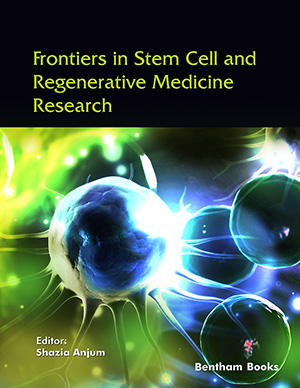
Abstract
Aim: The study aims to prepare a class of oleanolic-based compounds.
Background: Conventional drugs used to treat infectious diseases suffer from limitations such as drug toxicity and drug resistance. The resistance of microbes to antimicrobial agents is a significant challenge in treating microbial infections. Combining two or more drugs with different modes of action to treat microbial infections results in a delay in developing drug resistance by the microbes. However, it is challenging to select the appropriate drugs for combination therapy due to the differences in stability and pharmacokinetic profile of the drugs. Therefore, developing hybrid compounds using the existing drugs is a promising approach to design effective antimicrobial agents.
Objectives: To prepare oleanolic-based hybrid compounds followed by characterization, in vitro antibacterial and cytotoxicity evaluation.
Methods: Oleanolic acid-4-aminoquinoline-based hybrid compounds were synthesized via esterification and amidation. The compounds were characterized using FTIR, NMR, and UHPLC-HRMS. Oleanolic acid (OA) was isolated from the flower buds of Syzygium aromaticum (L.) Merr. & L.M.Perry, a species from Kingdom Plantae, order Mytales in the Myrtaceae family. Antibacterial activity was determined against selected strains of bacteria using the microdilution assay and cytotoxicity activity was assessed using the sulforhodamine B assay against selected cancer cell lines.
Results: The synthesized hybrid compounds exhibited antibacterial activity against the Gram-positive bacteria Enterococcus faecalis (ATCC13047), Bacillus subtilis (ATCC19659), Staphylococcus aureus as well as Gram-negative bacteria, Klebsiella oxytoca (ATCC8724), Escherischia coli (ATCC25922), and Proteus vulgaris (ATCC6380) with minimum inhibitory concentrations of 1.25 mg/mL compared to oleanolic acid (2.5 mg/mL). Compounds 13 and 14 displayed cytotoxicity in vitro against the cancer cell lines (MCF-7 and DU 145) compared to the oleanolic acid (IC50 ˃ 200 μM).
Conclusion: Modification of C28 of OA enhanced its biological activity.
Keywords: Syzygium aromaticum, oleanolic acid, 4-aminoquinoline derivatives, antibacterial activity, cytotoxicity, hybrid compounds.
[http://dx.doi.org/10.1016/S0140-6736(12)61728-0] [PMID: 23245604]
[http://dx.doi.org/10.1016/j.ejps.2018.10.017] [PMID: 30342173]
[http://dx.doi.org/10.1016/j.jep.2011.01.028] [PMID: 21291979]
[http://dx.doi.org/10.1016/S1473-3099(11)70054-8] [PMID: 21659004]
[http://dx.doi.org/10.1016/j.bmc.2018.11.018] [PMID: 30503412]
[http://dx.doi.org/10.1016/j.ejphar.2015.04.048] [PMID: 25959387]
[http://dx.doi.org/10.3390/molecules22122268] [PMID: 29257067]
[http://dx.doi.org/10.1016/j.ejmech.2016.06.053] [PMID: 27416552]
[http://dx.doi.org/10.1016/j.phymed.2011.12.009] [PMID: 22341643]
[http://dx.doi.org/10.1016/j.phymed.2005.10.008] [PMID: 17190643]
[http://dx.doi.org/10.1016/j.foodchem.2015.03.018] [PMID: 25863603]
[http://dx.doi.org/10.1016/j.ejmech.2015.03.048] [PMID: 25817774]
[http://dx.doi.org/10.1016/j.tetlet.2014.11.069]
[http://dx.doi.org/10.1016/j.jphotobiol.2016.12.013] [PMID: 28110253]
[http://dx.doi.org/10.1590/S0102-695X2011005000185]
[http://dx.doi.org/10.1016/j.eujim.2016.02.006]
[http://dx.doi.org/10.1016/j.jff.2017.12.055]
[http://dx.doi.org/10.1016/j.lwt.2017.11.042]
[http://dx.doi.org/10.1016/j.foodchem.2018.09.085] [PMID: 30724177]
[http://dx.doi.org/10.1016/j.foodchem.2010.03.094]
[http://dx.doi.org/10.1016/j.ejmech.2018.12.046] [PMID: 30677669]
[http://dx.doi.org/10.1016/j.ejmech.2013.10.016] [PMID: 24161703]
[http://dx.doi.org/10.1016/j.bmcl.2016.03.019] [PMID: 26988305]
[http://dx.doi.org/10.1016/j.ejmech.2017.03.005] [PMID: 28329729]
[http://dx.doi.org/10.1016/j.bmcl.2009.10.017] [PMID: 19846303]
[http://dx.doi.org/10.1016/j.bmcl.2014.09.079] [PMID: 25442310]
[http://dx.doi.org/10.1111/cbdd.12308] [PMID: 24612785]
[http://dx.doi.org/10.1016/j.bmc.2009.01.013] [PMID: 19188070]
[http://dx.doi.org/10.1016/j.bmc.2006.01.016] [PMID: 16458522]
[http://dx.doi.org/10.1055/s-0043-116674] [PMID: 28847024]
[http://dx.doi.org/10.1002/jhet.3791]
[http://dx.doi.org/10.1039/c3ra45333b]
[http://dx.doi.org/10.1039/C4NJ00936C]
[http://dx.doi.org/10.1038/s41598-019-42816-4] [PMID: 31004122]
[http://dx.doi.org/10.1038/srep38128] [PMID: 27922047]
[http://dx.doi.org/10.1007/s10753-014-0007-y] [PMID: 25173889]
[http://dx.doi.org/10.1016/j.arabjc.2010.10.009]
[http://dx.doi.org/10.1016/j.bmc.2009.05.075] [PMID: 19665899]
[http://dx.doi.org/10.1016/j.bmc.2006.04.035] [PMID: 16690319]
[http://dx.doi.org/10.1016/j.bmc.2012.10.019] [PMID: 23168082]
[http://dx.doi.org/10.1038/nprot.2006.179] [PMID: 17406391]
[http://dx.doi.org/10.1016/j.ijantimicag.2011.01.016] [PMID: 21411294]
[http://dx.doi.org/10.1007/s00284-010-9866-0] [PMID: 21221969]
[http://dx.doi.org/10.1007/s10482-009-9388-6] [PMID: 19894138]
[http://dx.doi.org/10.1172/JCI115301] [PMID: 2056129]
[http://dx.doi.org/10.1042/bj20030963] [PMID: 12959639]
[http://dx.doi.org/10.1016/0014-5793(85)80806-1]
[http://dx.doi.org/10.1016/j.bioorg.2019.102957] [PMID: 31077913]
[http://dx.doi.org/10.1016/j.bioorg.2016.08.001] [PMID: 27522460]
[http://dx.doi.org/10.1016/j.bmcl.2013.01.129] [PMID: 23434227]
[http://dx.doi.org/10.1016/j.ejphar.2014.07.011] [PMID: 25046839]
[http://dx.doi.org/10.1016/j.cbi.2015.11.013] [PMID: 26612655]
 34
34 1
1




























